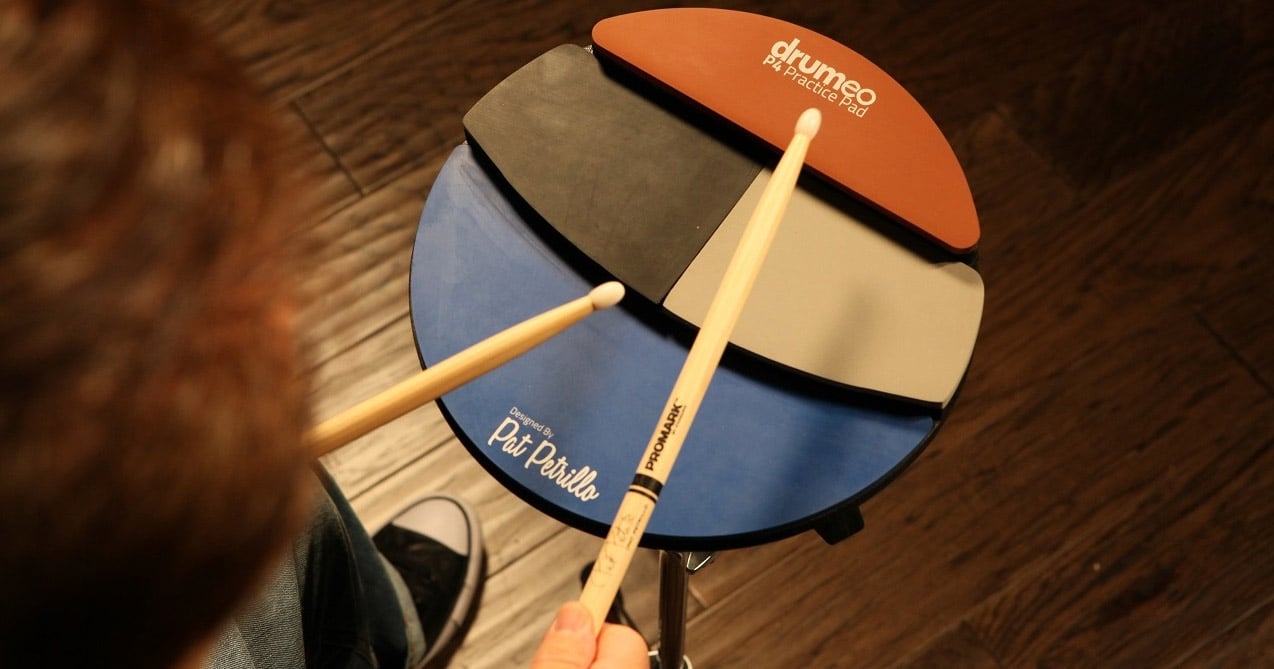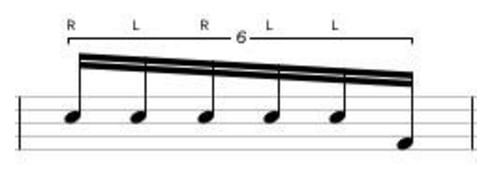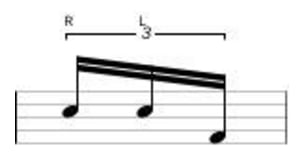
Sticking patterns offer a huge range of phrasing ideas and are often an untapped resource for most drummers. I had the opportunity to study with Rick Gratton at the height of his career years ago, and in our lessons we went over many sticking and linear patterns that he pulled from his study of the “Patterns Series” by Gary Chaffee. These were interesting lessons as I’ve studied the Chaffee material myself, but Rick’s approach to it was very different than anything I had seen in Gary’s books.
In this article I want to share with you one of the phrases that Rick and I worked on together, which I have found indispensable in my own playing. When I first learned this, it opened my eyes to whole new way of approaching this instrument.
Much of what Rick taught was what we now refer to as “artificial groupings” – or in other words, grouping notes together in a sequence to achieve a predetermined amount of notes. In today’s example we will be dealing with sextuplets (6 beats to a quarter note) in one bar of 4/4 time, which will amount to 24 total notes.
We can group notes together in numerous ways to achieve 24 notes and every sequence will sound and feel totally different due to the placement of the built in accents and bass drum notes.
Artificial groupings are interesting to me because any drummer at any level can learn them. With some basic know-how and and a little patience, these patterns can be just as relevant to a beginner as they can be to a seasoned pro.
In our example we will look at two groupings – a grouping of 6 notes and a grouping of 3 notes – and they will be arranged 6-3-6-3-6 to make up the 24 notes.
The first pattern is the grouping of 6. This is Gary Chaffee’s 5C sticking with a bass drum on the end to round out the sextuplet.

Begin by practicing this pattern on its own at a very slow tempo. Once you have a feel for this, start to move it around the kit, moving the right hand notes to alternate sound sources (toms and/or cymbals) and leaving the left hand strokes on the snare drum.
Then switch it up; move the left hand around the drums and leave the right-handed notes on the snare drum. Eventually you will have full freedom moving this pattern around the drum kit.
The second pattern is the grouping of 3.

Again, start slow and get comfortable moving this pattern around the kit. Once you have the two patterns down individually, it is time to put the whole pattern together.

Start by playing it on the snare drum and bass drum with a metronome. Moving it around the drums should be fairly simple once you have internalized the entire phrase (if you did your homework of learning each pattern individually first).
This pattern can work great as a solo or fill idea and can be played at very quick tempos. Practice playing three bars of time followed by one bar of this pattern as a fill around the drums.
Now for the really fun pattern. This grouping sounds fantastic as a half time shuffle type groove. To achieve this, simply put your right hand on the hi-hat and keep your left on the snare drum. Play the bass drum notes as written.
A couple of things that need to be considered to really make this pattern sing:
Here is the pattern written out as a groove:

Have fun with this and take your time learning it. Practicing slow at first will pay huge dividends in speed and precision later.
These patterns sound great whether you use them as a fill or groove, but in the end use them as a jump off point to develop your own patterns. Try to rearrange the note groupings. There is nothing stopping you from playing this as a 6-3-3-6-6 pattern, for example. Make it your own. That was really Gary Chaffee’s intention with this stuff in the first place.
Until next time, happy drumming!
Follow Robb Ryan:
Website
Facebook
Twitter
Robb Ryan is a drum set educator specializing in the Patterns Series by Gary Chaffee. He is a lifetime student, having studied this craft for 35 years.


By signing up you’ll also receive our ongoing free lessons and special offers. Don’t worry, we value your privacy and you can unsubscribe at any time.
We use cookies for traffic data and advertising. Cookie Policy »